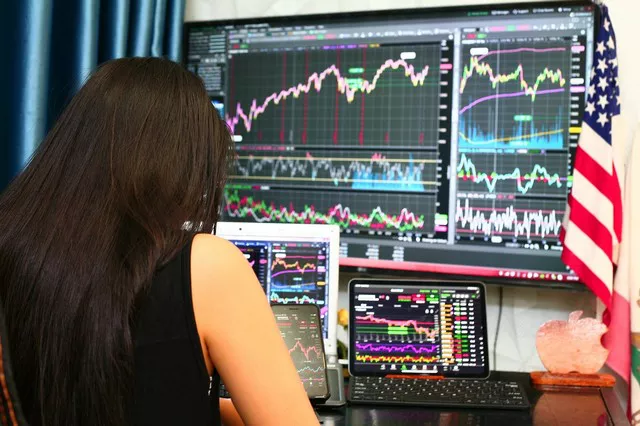Wheat, a staple crop and a cornerstone of global agriculture, plays a crucial role in food security and economic stability worldwide. Recently, there has been a notable uptick in wheat futures, prompting widespread interest and speculation within the agricultural and financial sectors. This article delves into the multifaceted reasons behind the surge in wheat futures, analyzing various factors contributing to this market phenomenon.
1. Supply and Demand Dynamics
At the heart of the surge in wheat futures lies the intricate interplay between supply and demand dynamics. Fluctuations in global wheat production and consumption significantly impact market prices. In recent months, adverse weather conditions, such as droughts and excessive rainfall in key wheat-producing regions, have led to concerns over diminished harvests. Reduced yields have constrained supply levels, placing upward pressure on wheat prices. Concurrently, increasing demand for wheat-based products, driven by population growth, changing dietary preferences, and the expansion of the processed food industry, has bolstered demand-side dynamics, further fueling the surge in wheat futures.
2. Geopolitical Tensions and Trade Policies
Geopolitical tensions and trade policies wield considerable influence over commodity markets, including wheat futures. Trade disputes, tariffs, and geopolitical instability can disrupt supply chains, impede exports, and heighten market volatility. Recent geopolitical developments, such as trade tensions between major wheat-exporting nations, shifts in trade agreements, and geopolitical conflicts affecting key wheat-producing regions, have exacerbated uncertainty within the wheat market. Investors and market participants closely monitor geopolitical developments for potential impacts on wheat supply, demand, and trade flows, contributing to heightened price volatility and speculative activity in wheat futures markets.
3. Currency Fluctuations and Macro-economic Factors
Currency fluctuations and macro-economic factors exert a significant influence on commodity markets, including wheat futures. Changes in exchange rates, inflationary pressures, monetary policies, and macro-economic indicators can impact the competitiveness of wheat exports, production costs, and purchasing power, thereby influencing wheat prices. Depreciation of currency values in major wheat-producing or consuming nations may bolster export competitiveness and domestic prices, stimulating demand for wheat futures as a hedge against currency risks. Conversely, currency appreciation may dampen export competitiveness and curb demand for wheat futures, exerting downward pressure on prices. Macro-economic developments, such as shifts in interest rates, GDP growth, and inflation expectations, also shape investor sentiment and market dynamics, influencing wheat futures prices.
4. Speculative Activity and Market Sentiment
Speculative activity and market sentiment play a pivotal role in driving short-term fluctuations in wheat futures prices. Investor perceptions, sentiment indicators, and speculative positioning can amplify price movements and exacerbate market volatility. Heightened uncertainty, speculative trading strategies, and herd behavior among investors may contribute to exaggerated price swings in wheat futures markets. Market sentiment is influenced by a myriad of factors, including weather forecasts, crop reports, geopolitical developments, and macro-economic indicators. Positive sentiment, fueled by optimistic forecasts of robust demand or concerns over supply disruptions, can spur speculative buying and drive prices higher. Conversely, negative sentiment, stemming from bearish crop forecasts or geopolitical tensions, may trigger speculative selling and precipitate price declines. Understanding market sentiment and distinguishing between fundamental factors and speculative influences is essential for navigating wheat futures markets effectively.
5. Climate Change and Environmental Factors
Climate change and environmental factors pose significant challenges to global wheat production and supply chains, exerting long-term implications for wheat futures markets. Rising temperatures, changing precipitation patterns, and extreme weather events can disrupt agricultural productivity, exacerbate water scarcity, and increase the frequency and severity of crop failures. Climate-induced disruptions to wheat production have far-reaching consequences, impacting food security, supply chain resilience, and market dynamics. Heightened awareness of climate risks has prompted stakeholders across the agricultural and financial sectors to adopt adaptation strategies, invest in climate-resilient technologies, and explore innovative risk management solutions. Climate change adaptation and mitigation efforts are critical for enhancing the resilience of wheat production systems and safeguarding against future supply shocks, thereby mitigating price volatility in wheat futures markets.
Conclusion
The surge in wheat futures reflects a confluence of diverse factors shaping the global wheat market landscape. Supply constraints, geopolitical tensions, currency fluctuations, speculative activity, and climate change all contribute to the dynamic and often volatile nature of wheat futures markets. Understanding the complex interplay between these factors is essential for market participants, policymakers, and stakeholders seeking to navigate and mitigate risks in wheat futures markets effectively. As the global population continues to grow, and climate change poses mounting challenges to agricultural systems, ensuring the resilience and sustainability of wheat production and supply chains remains imperative for food security and economic stability worldwide.


